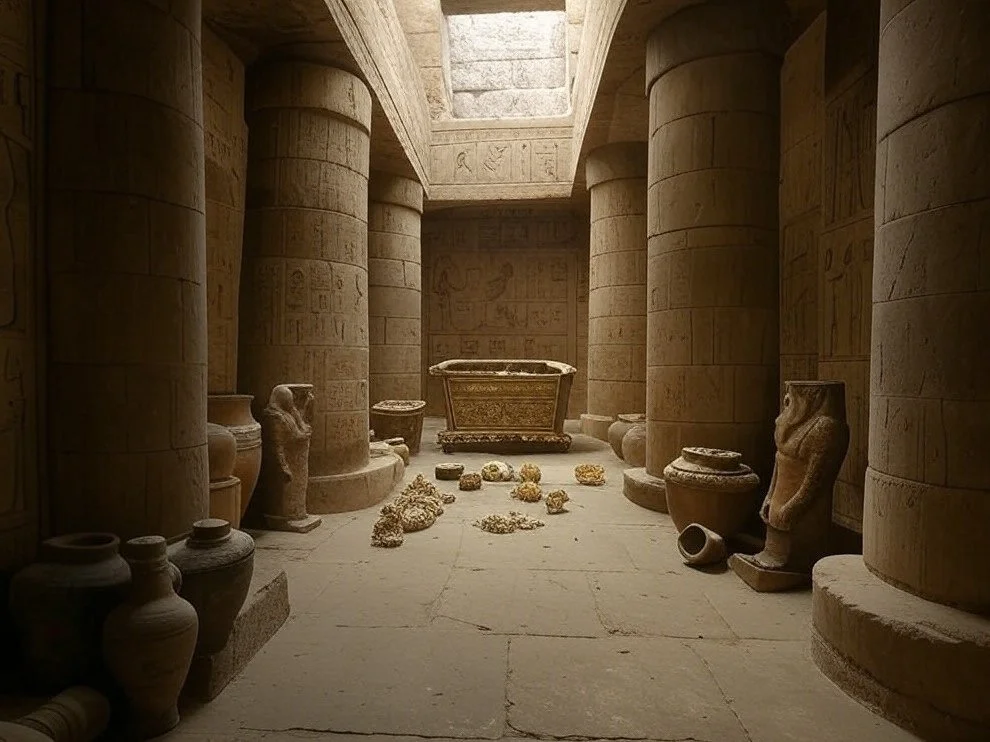Introduction
The Great Pyramid of Giza, built during the reign of Pharaoh Khufu (c. 2589–2566 BCE), stands as one of the most enduring marvels of ancient engineering. Despite centuries of exploration and research, this architectural masterpiece continues to hold secrets. Recent technological advancements have revealed previously unknown voids and hidden chambers within the structure, sparking renewed interest in its construction and purpose.
Historical Context
The Great Pyramid, the largest of the three pyramids at Giza, was originally constructed as a royal tomb. Over time, explorers and archaeologists have uncovered various internal passageways, including the King’s Chamber, the Queen’s Chamber, and the Grand Gallery. However, not all of the pyramid’s internal structure has been fully mapped or understood.
Modern Discoveries and Unexplored Chambers
Recent technological studies have provided new insights into the pyramid’s hidden spaces:
The ScanPyramids Project – Launched in 2015, this initiative employs non-invasive techniques such as muon radiography, infrared thermography, and 3D reconstruction to detect anomalies within the pyramid.
The Big Void – In 2017, scientists identified a large, previously unknown cavity above the Grand Gallery, measuring approximately 30 meters in length. Its purpose remains speculative, with theories ranging from an engineering counterweight to a hidden burial chamber.
The North-Face Corridor – A newly discovered passageway behind the pyramid’s north face, announced in 2023, raises further questions about its function and potential access points to other undiscovered spaces.
Theories on the Purpose of Hidden Chambers
Scholars and Egyptologists propose several theories regarding the significance of these unexplored chambers:
Structural Function – Some argue that these voids were designed to relieve weight and stabilize the pyramid’s internal framework.
Secret Burial Chambers – Given the complexity of pyramid construction, some researchers believe that hidden tombs or storage rooms containing artifacts might still exist.
Symbolic or Religious Purpose – Ancient Egyptian cosmology may have influenced the design, embedding spiritual and astronomical significance in the pyramid’s internal structure.
Challenges in Exploration
While modern scanning technology has unveiled hidden anomalies, accessing these chambers presents significant difficulties:
Preservation Concerns – Direct excavation could compromise the pyramid’s stability and integrity.
Technological Limitations – Current remote sensing methods provide limited resolution, making precise identification of chamber contents challenging.
Ethical Considerations – The cultural and historical significance of the Great Pyramid necessitates a cautious approach to avoid irreversible damage.
Future Prospects
As technology continues to advance, new methodologies may allow for minimally invasive exploration of these hidden chambers. Robotics, AI-driven data analysis, and improved imaging techniques could provide clearer insights into their construction and purpose. Further interdisciplinary collaboration between archaeologists, engineers, and historians will be crucial in unraveling the remaining mysteries of the Great Pyramid.
Conclusion
The Great Pyramid of Giza remains a symbol of human ingenuity and ambition. Despite extensive research, its unexplored chambers hold untold secrets that could reshape our understanding of ancient Egyptian civilization. As scientific exploration continues, the potential for groundbreaking discoveries remains high, ensuring that the Great Pyramid remains a focal point of historical inquiry for generations to come.







